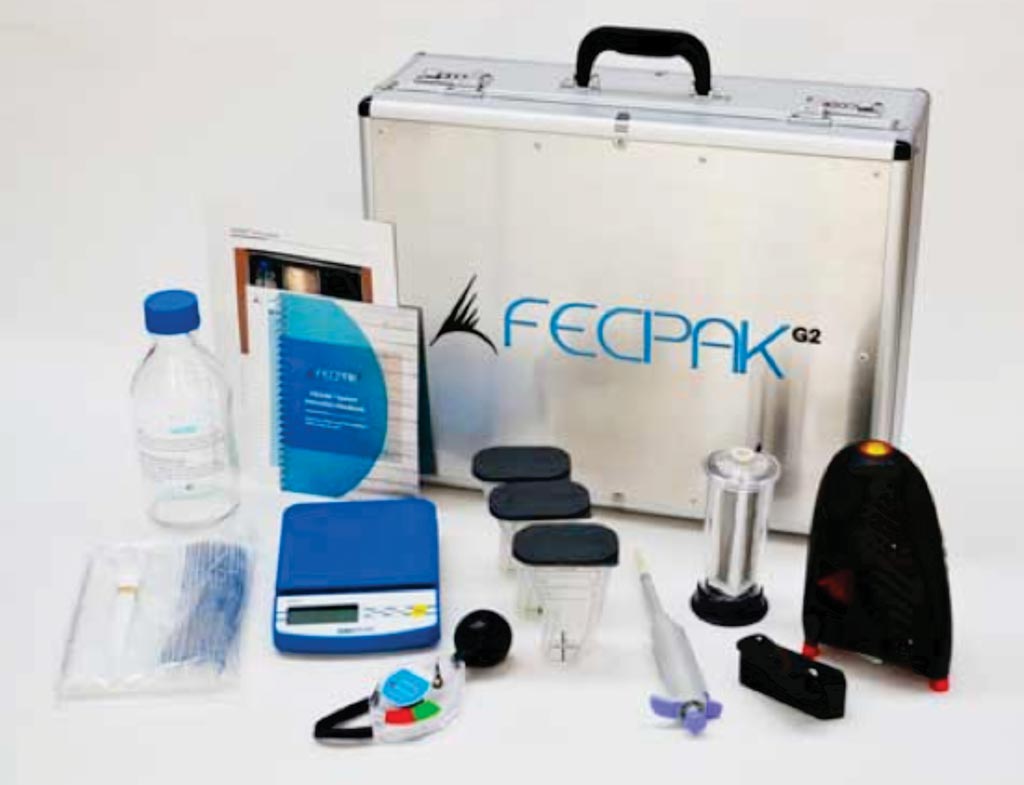Diagnostic Methods Compared for Fecal Helminth Eggs
By LabMedica International staff writers
Posted on 24 Jun 2018
For estimating prevalence of soil-transmitted helminthiasis, assessing infection intensities, evaluating drug efficacy and monitoring drug resistance, accurate diagnostic methods are essential. The currently recommended Kato-Katz method has already been in use for decades.Posted on 24 Jun 2018
A comparison has been made between the Kato-Katz method and a novel method, which is an online, remote location, parasite diagnostic system previously used in veterinary medicine. The new method is based on the flotation-dilution principle and its novelty is the accumulation of parasite eggs into one viewing area within a fluid meniscus.

Image: The FECPAKG2 is a complete remote-location parasite assessment tool (Photo courtesy of Techion Group).
An international team of scientists working with the Swiss Tropical and Public Health Institute (Basel, Switzerland) collected two stool samples from adolescent participants (age 15–18 years) at baseline and 14 to 21 days after treatment in the framework of a randomized clinical trial on Pemba Island, Tanzania. Stool samples were analyzed with different diagnostic efforts: i) one or ii) two Kato-Katz thick smears from the first sample, iii) two Kato-Katz thick smears from two samples and iv) FECPAKG2 from the first sample. For FECPAKG2 an image of the fecal sample was then captured, and stored offline on a computer and uploaded onto a cloud once connected to the Internet. Subsequently, the image can be analyzed at any time by specialists around the world.
The team reported that complete data for all diagnostic efforts were available from 615 participants at baseline and 231 hookworm-positive participants at follow-up. At baseline FECPAKG2 revealed a sensitivity of 75.6% (72.0–77.7) for detecting Ascaris lumbricoides, 71.5% (67.4–95.3) for hookworm and 65.8% (64.9–66.2) for Trichuris trichiura, which was significantly lower than any of the Kato-Katz methods and highly dependent on infection intensity. Despite that the egg counts based on FECPAKG2 were relatively lower compared to Kato-Katz by a ratio of 0.38 (0.32–0.43) for A. lumbricoides, 0.36 (0.33–0.40) for hookworm and 0.08 (0.07–0.09) for T. trichiura, the egg reduction rates (ERR) were correctly estimated with FECPAKG2.
The authors concluded that the sensitivity to identify any soil-transmitted helminthes (STH) infection was considerably lower for FECPAKG2 compared to Kato-Katz. Following rigorous development, FECPAKG2 might be an interesting tool with unique features for epidemiological and clinical studies. The study was published on June 4, 2018 in the journal Public Library of Science Neglected Tropical Diseases.
Related Links:
Swiss Tropical and Public Health Institute













